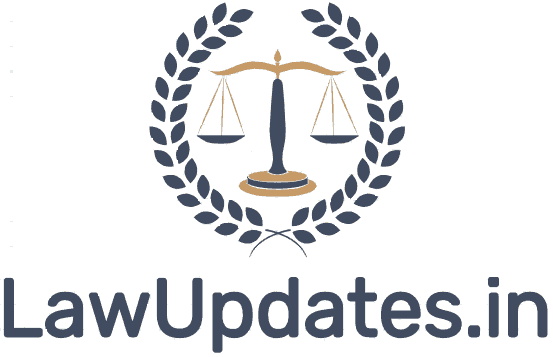In response to an argument that the Karnataka High Court should not have interpreted the Quran for the purpose of deciding the Hijab ban case, the Supreme Court said that the High Court had no choice but to do so, given that it was argued that wearing of hijab was an essential religious practice (ERP).
After Senior Advocate Yusuf Muchhala, appearing for one of the petitioners, argued that the High Court should not have gone into the interpretation of the Quran, the Court said,
“You went to court and said this is an essential religious practice. What option does the High Court have but to point it out? Now you say High Court cannot do this.”
Muchhala responded,
“It is only judicial wisdom to not touch a field in which they have no expertise. High Court when encountered with ERP should have said ‘hands off we cannot look into that’.”
The Bench of Justices Hemant Gupta and Sudhanshu Dhulia was hearing the case challenging the hijab ban in Karnataka government educational institutions.
During the course of his arguments, Muchhala told the Court that the High Court wrongly noted that hijab were only being worn recently by the students of government schools and colleges.
“No denial of these averments by the State, so it’s astounding what they say in their pleadings,” he added.
He told the Bench that the petition contains instances of people being denied entry to institutes because of wearing hijab, and consequently, being denied access to education. Justice Gupta responded,
“If these were not before the High Court, we can’t take it, but hear the other matters. We can’t hear this on new grounds. Your point is very well taken.”
Muchhala argued that his main points of challenge were the Muslim girls’ rights of freedom of conscience, privacy, and to have access to education.
“All these are grounds, there must be uniformity or else there will be disorder. Courts must guard the fundamental rights of dignity. Doctrine of proportionality will also come into play there,” he said.
“We have to see from the view of need for awareness of sensitivity. Cultural and religious diversity can be accommodated…If turban can be allowed, I won’t put it under discrimination but tolerance which can be there for hijab also, that won’t lead to disharmony,” he went on to say.
Next, the Senior Advocate submitted that the High Court judgment said that Articles 19(1) and 25 of the Constitution are mutually exclusive. However, Justice Gupta replied,
“Court is only speaking about freedom of conscience and freedom of religion. They are not saying Articles 25 and 19 are mutually exclusive.”
Arguing that the two rights cannot be mutually exclusive but rather compliment each other, Muchhala went on to ask,
“What is the crime these little girls are committing? Putting a piece of cloth on their head. Because of this, all rights are denied to them. One who puts hijab must not be looked like a caricature, but with dignity.”
He cited the Supreme Court’s judgment in Puttaswamy to argue that choice of dress, apparel or appearance was also part of the right to privacy.
Senior Advocate Salman Khurshid was next to make arguments on behalf of the petitioners. He argued,
“There is no binary like obligatory and non-obligatory in Islam. What is in Quran is obligatory and what the Prophet interpreted it is also obligatory. This is a critical thing to keep in mind.”
When the Court asked him whether he was insisting that wearing of hijab was an essential religious practice, he replied,
“It is a matter of religion, culture, conscience, culture, dignity.”
He then took the Court through verses of the Quran and pictures of burqa, hijab and jilbab to explain the difference between them.
“The very elevated ideas given to the country by this very Court cannot be taken away. If I am at the Bar, I have to subscribe to the dress code. But does it mean I cannot wear anything other than this which is important for my culture or religion?
Hijab is a screen as per the Quran and it is religion or culture. Ghoonghat is considered very essential in UP or North India….”
Jilbab, Hijab and Burqa
Jilbab, Hijab and Burqa
After the arguments concluded, a Sikh lady sought to intervene in the matter since she and other Sikh women also wear turbans to institutional spaces.
The Court will take up the matter for hearing next on Wednesday, September 14, and said that the petitioners should complete their arguments by Thursday.
The Supreme Court had last week issued notice to the State of Karnataka in a batch of appeals challenging a Karnataka High Court verdict that effectively upheld the ban on wearing hijab in government schools and colleges.
The High Court had on March 15 upheld a Karnataka government order (GO) effectively empowering college development committees of government colleges in the State to ban the wearing of hijab (headscarves) by Muslim girl students in college campus.
The petitioners – Muslim girl students from various colleges in Karnataka – had approached the High Court after they were denied permission to attend classes on account of wearing hijab.
One of the pleas before the top court argued that the High Court “failed to note that the right to wear a Hijab comes under the ambit of ‘expression’ and is thus protected under Article 19(1)(a) of the Constitution.”
It also contended that the High Court failed to take note of the fact that the right to wear Hijab comes under the ambit of the right to privacy under Article 21 of the Constitution of India.
With regard to uniform, the plea said that the Karnataka Education Act, 1983, and the Rules made under the same, do not provide for any mandatory uniform to be worn by students.
Source Link

![[Hijab Case] High Court had no option but to interpret Quran once Essential Religious Practice point was argued: Supreme Court 1](https://lawupdates.in/wp-content/uploads/2020/07/SC-1.jpg)


